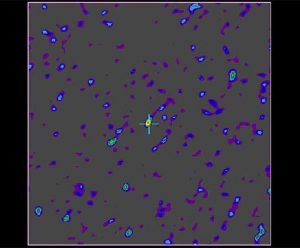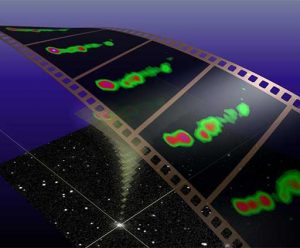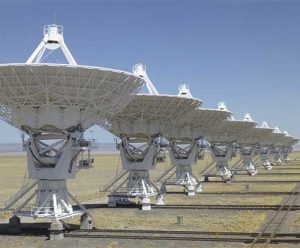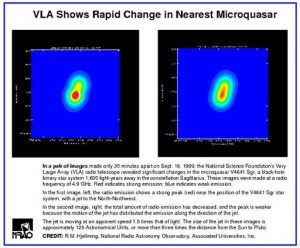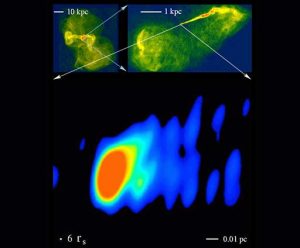A team of observers used a gamma-ray burst as a powerful tool to unveil the nature of the galaxy in which it occurred, more than 7 billion light-years away.
Cosmic Collision Between Jet and a Gas Cloud Witnessed
Astronomers using the National Science Foundation’s Very Long Baseline Array of radio telescopes have discovered a cloud of gas apparently being struck by a jet of ultrafast particles powered by the energy of a supermassive black hole at the core of a galaxy 450 million light-years away.
VLA Reveals Hot Bubbles in MIlky Way’s Heart
Sophisticated computer analysis of 20 years of data from the National Science Foundation’s Very Large Array radio telescope has revealed evidence of hot bubbles in the dense, rapidly-spinning disk of material being sucked into a massive black hole 26,000 light-years distant at the heart of our own Milky Way Galaxy, astronomers announced.
Dancing of Orbiting Water Molecules
A disk of water molecules orbiting a supermassive black hole at the core of a galaxy 60 million light-years away is reverberating in response to variations in the energy output from the galaxy’s powerful central engine close to the black hole.
Dramatic Outburst Reveals Nearest Black Hole
Scientists have discovered the closest black hole yet, a mere 1,600 light years from Earth.
VLBA Reveals Cosmic Jet Formation
Astronomers have gained their first glimpse of the mysterious region near a black hole at the heart of a distant galaxy, where a powerful stream of subatomic particles spewing outward at nearly the speed of light is formed into a beam, or jet, that then goes nearly straight for thousands of light-years.






